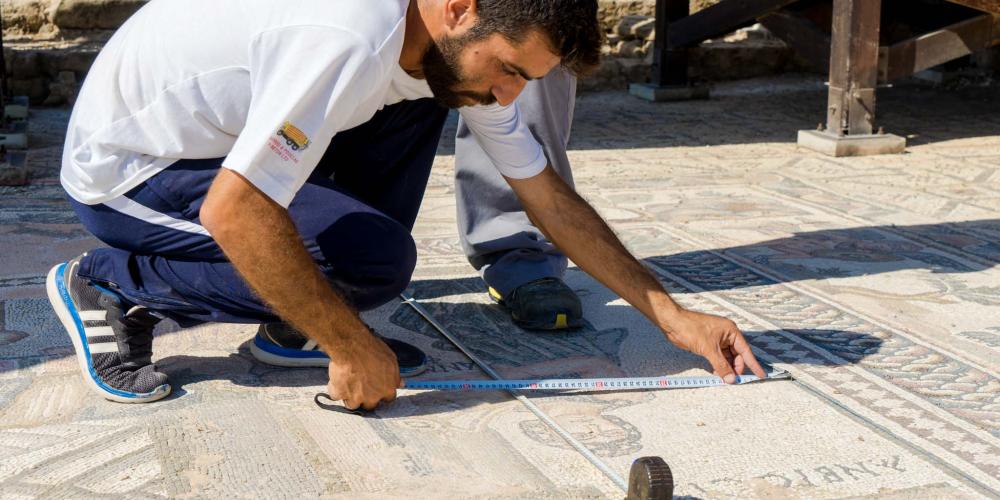Protecting the mosaics of Pafos

Just metres away, a large shelter covers for protection other mosaics, those of the 'House of Dionysos' that are also being systematically maintained and are on display for visitors. As with all the mosaics across the archaeological site, they are also being attended by the specialised team and their constant work.
Leading the group is Dr. Eleftherios Charalambous, conservator of the Department of Antiquities. He explains why so much effort is being put into preserving the mosaics here. “We have a lot of mosaic floors - more than 100 - and we try to conserve and maintain all of them,” he says. “When the mosaics were conserved in the past, different materials were being used. So, the first thing we have to do is remove the old materials and put new ones, according to recent scientific methods of conservation”.
These colourful and detailed artworks are one of the highlights of the Kato Pafos Archaeological site and one of the significant reasons for the World Heritage site listing. They decorated the floors of the houses of rich Romans and public officials more than 2000 years ago.
“For the Romans, it was very important to decorate their houses with elaborate mosaics and they paid a lot of money because they wanted to show their social status as owners of the house,” Eleftherios says. “Also, the people wanted to make a mosaic and have it last forever. They believed if they used stones in pieces of art, it would be more difficult for them to be destroyed.”
The Romans were right. The mosaics have been able to stand the test of time and they are in a remarkable condition considering how old they are. It’s still easy to see the images that were created in them – scenes of daily life, portraits of important figures, and depictions of mythological scenes.
But for the conservators here at the archaeological site, there’s a balance between protecting the mosaics and displaying them for visitors. While some of the artworks are in protective shelters and on permanent display, others are often covered in order to protect them.
Eleftherios says that some of the mosaics that his team are working on right now will be reburied when the restoration work is finished. “One of the conservation methods we use is reburial of mosaics, as it is not possible to cover all of them with shelters, due to a number of reasons, such as the need to preserve the authenticity of the site” he says.
"So, instead we have seasonal and permanent burials, and we choose every year which mosaics we want to open for the public.”
Visiting the Kato Pafos Archaeological site
When you visit the site for yourself, you may be able to see conservators working hard on the maitenance of the mosaics. Make sure you take some time to have a look at how detailed the restoration techniques and how beautiful the ancient images are.
Hours of Operation:
Low season (16/9 - 15/4 ):
Monday - Sunday: 8:30 - 17:00
High season (16/4 - 15/9):
Monday - Sunday: 8:30 - 19:30
Pricing:
€ 4,50




